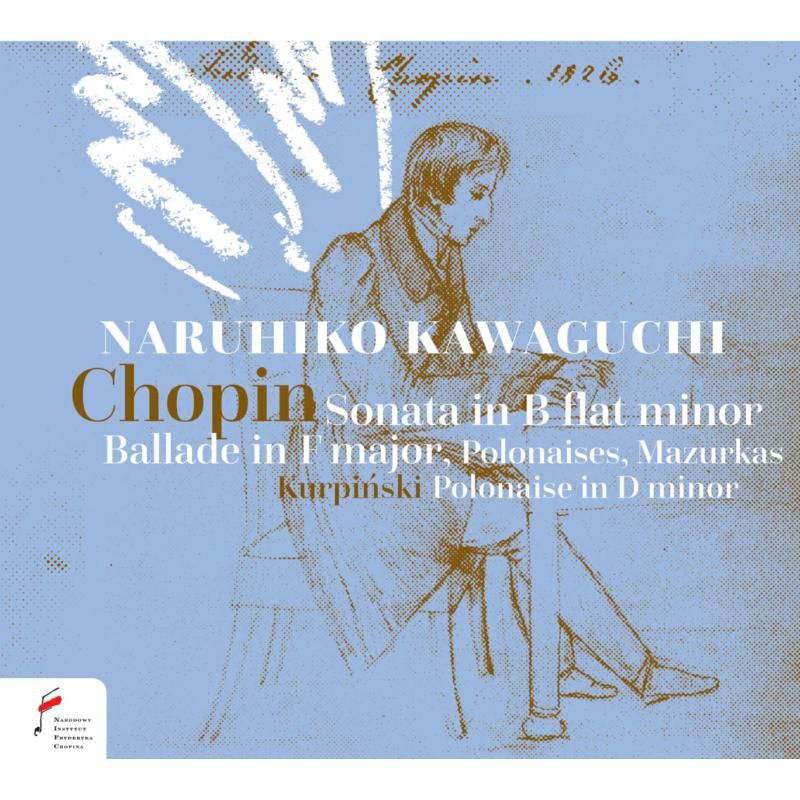Chopin - on period instruments

Recordings here from the First International Chopin Competition on Period Instruments, held in Warsaw from September 2nd-24th, 2018. One pianist - the excellent Naruhiko Kawaguchi, who won second prize - four instruments.
And two composers: the disc opens with a Polonaise in D-Minor by a contemporary of Chopin's, Karol Kurpiński (1785-1857), played on a beautiful Buchholtz piano from around 1825/6. The piece is lovely, not a masterpiece in the way of Chopin's output, but eminently charming and even, in its acciaccaturas, cheeky. Certainly Kawaguchi realises this. He played the piece in the first round, and here's a video so you can see the piano he used:
The rest of the disc is devoted to Chopin. On the same piano, Kawaguchi played the Polonaise in B flat, Op. 71/2, with n ability and yet with a wide palette. It feels more nuanced than on a full modern Steinway. Let's take this piece on a bit of a walk. Here's Kawaguchi. Listen to how his trills bite:
Moving into historical recordings, here’s the great Grigory Ginsburg, a Goldenweiser pupil, in the fine APR transfer:
... and here, from a more modern era, is Vladimir Ashkenazy on Decca:
All three have strengths interpretatively, of course, but the original instrument approach makes the music feel so fresh.
Still in the first stage, Kawaguchi gave a stormy performance of the so-called ‘Octave Study’ (Op. 25/10) on an 1837 Erard, with a lovely bright, clear top and rounded chordal sound. The octave legato in the contrasting section is perhaps less fluid than one might here on a later instrument due to he rapid-decay sound envelope of the early instrument, but that's an observation, not a criticism. It's another way of hearing, a truer way:
Pleyel pianos are much associated with Chopin, and indeed here's one made in 1842 in the F-Major Ballade, Op. 38. The piece was written in 1839, so the dating of instrument is perfect. Kawaguchi finds real tenderness in the gently rocking opening, while the explosive, fast section. But whatever the instrument, this is a performance up there with the best. This is so exciting towards the end and the instrument allows for full textural detail to emerge easily:
Let’s have modern performance to go with that: Maurizio Pollini on DG in fine form:
From Pleyel back to Erard, then, for the Op. 26 Polonaises. the first contrasting the granitic with the fluid (what a wonderful rubato Kawaguchi demonstrates!), these second almost volcanic. Here they are, together in one video:
The second Polonaise of Op. 26 emerges as a major tone poem for piano here, with a distinct sense of narrative.
It is followed by teh set of four Mazurkas, Op. 24 on a 1847/8 Broadwood, sweet-toned and perfect for these pieces, as is Kawaguchi's gentle caressing of line and rhythmically disciplined delivery. Mazurkas sometimes feel as if they get short shrift in Chopin recitals, but these should convince any doubters (these performances are from the competition's second stage):
The Chopin Second Sonata is heard on that 1842 Pleyel; the muscularity of Chopin's writing allows us to appreciate the full extent of this instrument's expressive range, and Kawaguchi is simply superb interpretatively, with a first movement shot through with energy and yet with enough 'give' to let the lyrical lines speak; the Scherzo is a real highlight, rhythmically sprung with no concessions for speed on a technical level. There's also a sense of Devil-may-care about this, which then melts beautifully into sweet melody. The famous funeral march is taken at a perfect pace, and Kawaguchi's firm rhythmic sense enables its cumulative power to sihine. All that is left is the wind whisptering in the gravestones:
The Chopin Institute recording appears not to be on Spotify, but there is a 2020 album.of Chopin there, and I have attached a link to that below. The Amazon link is to thie present new release.
